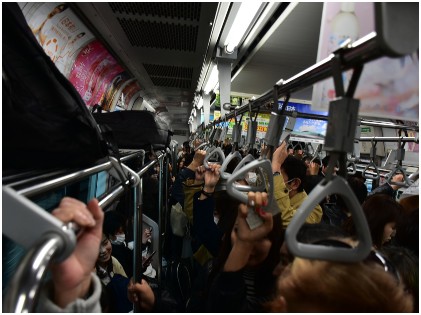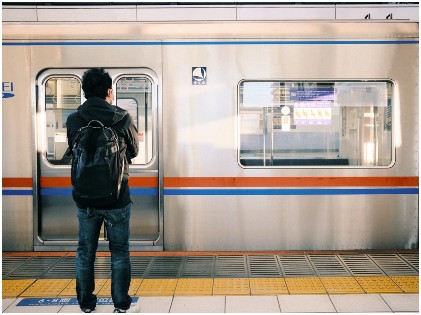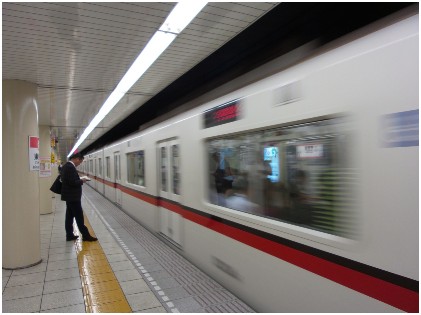We’ve heard of odd jobs. Or probably imagined what it feels like doing so. No matter what, certainly you might not have thought of being a pusher, a passenger pusher, that is. For people who undertake this task of pushing people inside mass vehicles at crowded places like bus stops, railway stations, and the like, and that too during the rush hours-the job is actually not simple.
Why Passenger Pushers?
 In Japan, the rail network is well developed. Compared to most other nations, Japan stands out for its punctuality and superiority. In fact, in Tokyo itself, 40 million passengers travel via rail every day, unlike other transport modes like private cars and buses. On the other, only 8.7 million people constitute 22% of the population and are dependent on subways. With such traffic, pushers are so dedicated and committed to their jobs that they don’t leave a minute to go to waste.
In Japan, the rail network is well developed. Compared to most other nations, Japan stands out for its punctuality and superiority. In fact, in Tokyo itself, 40 million passengers travel via rail every day, unlike other transport modes like private cars and buses. On the other, only 8.7 million people constitute 22% of the population and are dependent on subways. With such traffic, pushers are so dedicated and committed to their jobs that they don’t leave a minute to go to waste.
Speaking about the Tokyo subway network in specific, it’s indeed one of the marvels in transportation. Trains almost come at an interval of 5 minutes in most lines on an average and sometimes even 2 or 3 minutes, during peak hours. Strangely, even when so many trains keep working at such short intervals, the subway remains overcrowded. One looks at the data records and can gauge how almost all the trains run beyond their normal capacities (like about 200% overrated capacity).
So Who Are ‘Oshiyas’ Or Pushers?
 This job profile has no doubt gained precedence in Japan, but the idea originated first in New York City. Pushers had different names in different countries. But their tasks remain the same- pushing people in trains and similar such transport modes to fit in. It was in the 1920s that the first pushers came into existence. There, the subway guards fulfilled similar responsibilities of pushing people in the trains. All these busy stations always had trains coming and moving swiftly, without causing much delay.
This job profile has no doubt gained precedence in Japan, but the idea originated first in New York City. Pushers had different names in different countries. But their tasks remain the same- pushing people in trains and similar such transport modes to fit in. It was in the 1920s that the first pushers came into existence. There, the subway guards fulfilled similar responsibilities of pushing people in the trains. All these busy stations always had trains coming and moving swiftly, without causing much delay.
Sadly, not everyone likes them because they pushed and shoved off passengers in a hostile manner! Of course, they had to implement a lot of vigor into the job, and that made them gain the reputation of ‘sardine packers.’ Believe it or not, their brutality often made national headlines! But needless to say, the way they continued doing the job, despite being labeled with such terms, truly stands extraordinary. You might look at the crowd from a distance and wonder how on earth all these people would accommodate inside. But thanks to these pushers, they ensure that no one feels left out!
How did it all start in Japan?
When pushers culture came into existence first at the Shinjuku station of Tokyo, they were popular as ‘passenger arrangement staff.’ Most students who did part-time jobs started working, and eventually, they became experts in their jobs. Even now, plenty of students and part-time workers fulfill these roles in various positions. Additionally, station staff also served as pushers. Though there’s no specific academic or skill-based qualification required, nowadays, most places hire dedicated ‘pushers.’ During peak hours, they get assistance from the add-on workers.
They Are Fading Away Though
 The trend started dissipating once automatic turnstiles and remote door controls made a foray into this market. Gradually, these ‘sardine packers’ started losing their jobs. For a brief period of time, passengers mourned their demise. Looking back, few movies were released that dealt with this subject, like The Big Noise, Subway Sadie, Wolf’s Clothing, Love Over Night, and such.
The trend started dissipating once automatic turnstiles and remote door controls made a foray into this market. Gradually, these ‘sardine packers’ started losing their jobs. For a brief period of time, passengers mourned their demise. Looking back, few movies were released that dealt with this subject, like The Big Noise, Subway Sadie, Wolf’s Clothing, Love Over Night, and such.
Not to forget the biographical movie called Pusher that was set during World War I, also depicted the lives of subway pushers brilliantly. In recent times (2012), Michael Wolf, a Hong Kong-based photographer, created Tokyo Compression. This photo series captures the typical pained and traumatized expressions on commuters struggling to free themselves from being crushed against the window.
Sometimes bodies were so close to each other that physical movement became next to impossible. Short persons suffered the most being smothered against the clothing of their fellow passengers. Getting off and at the right station required more than strength and determination. Besides, emergencies like fire hazards and pickpocket incidents were also intensely depicted. Technology has certainly progressed, but pushers as a community are hard to forget. And people will continue to cherish these memories forever!





